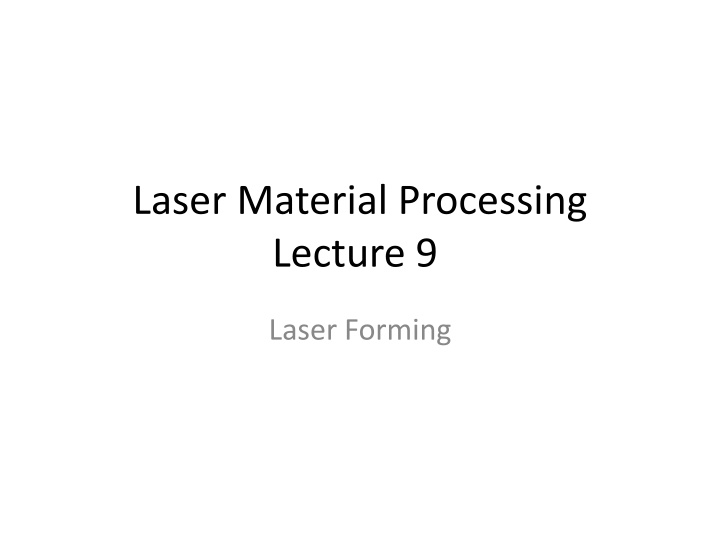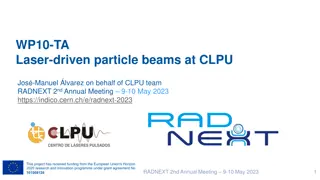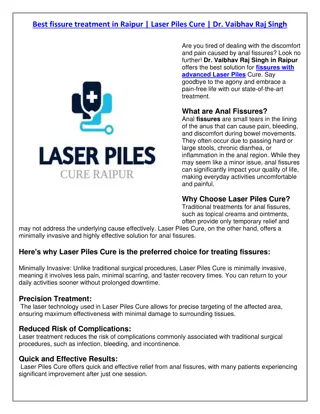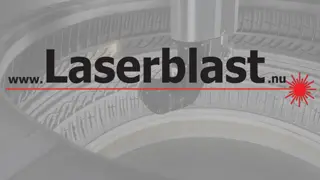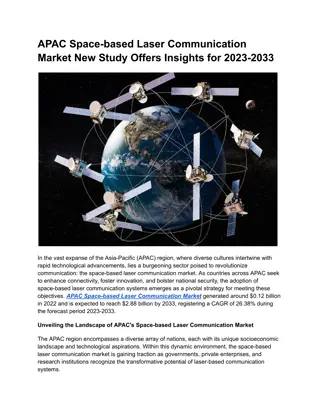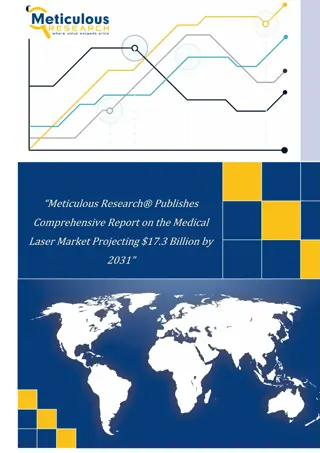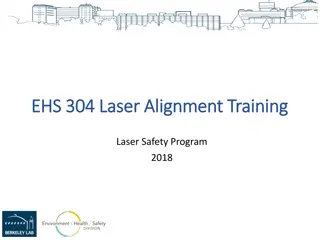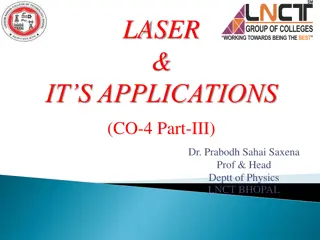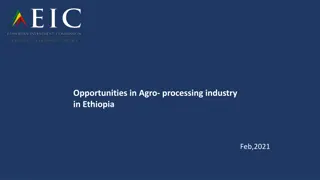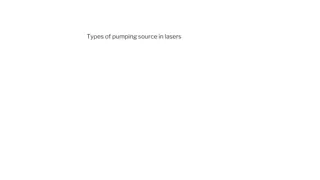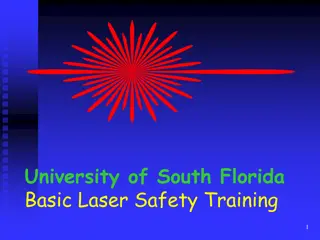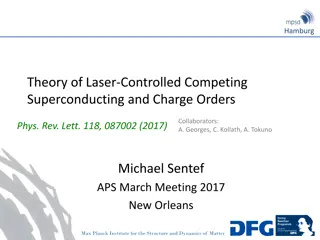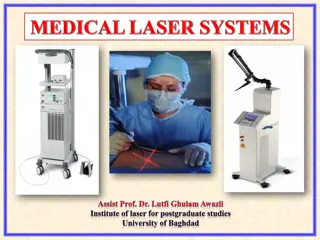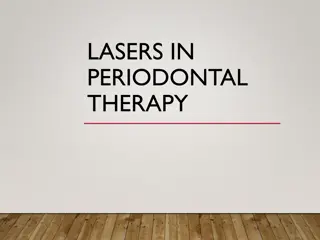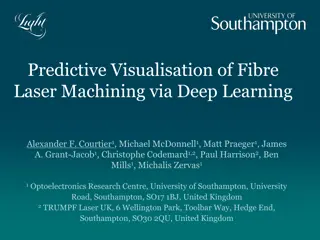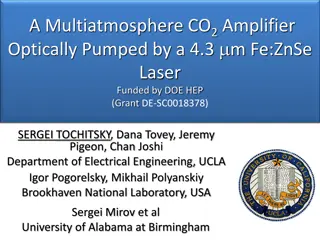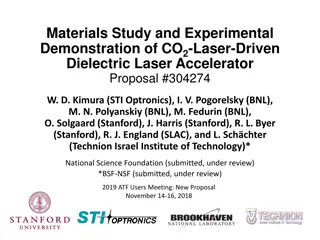Laser Material Processing Lecture 9
Laser forming and bending are advanced processes utilized in shaping metallic components without mechanical contact. Laser forming induces thermal stresses in workpieces, enabling plastic strains to create precise shapes with minimal distortion. Laser bending, on the other hand, modifies the curvature of sheet metal using thermal residual stresses, achieving complex geometries without externally applied forces.
Uploaded on Feb 20, 2025 | 0 Views
Download Presentation

Please find below an Image/Link to download the presentation.
The content on the website is provided AS IS for your information and personal use only. It may not be sold, licensed, or shared on other websites without obtaining consent from the author.If you encounter any issues during the download, it is possible that the publisher has removed the file from their server.
You are allowed to download the files provided on this website for personal or commercial use, subject to the condition that they are used lawfully. All files are the property of their respective owners.
The content on the website is provided AS IS for your information and personal use only. It may not be sold, licensed, or shared on other websites without obtaining consent from the author.
E N D
Presentation Transcript
Laser Material Processing Lecture 9 Laser Forming
Laser Forming Videos https://www.youtube.com/watch?v=1SBgobo p7Wg https://www.youtube.com/watch?v=FDZhex_ ASQE
Laser Forming -Laser forming has become a viable process for the shaping of metallic components. -In contrast with conventional forming techniques this method requires no mechanical contact and hence offers many of the advantages of process flexibility associated with other lasermanufacturing techniques such as laser cutting and marking. -Laser forming can produce metallic shapes with minimal distortion.
Laser Forming -The process is similar to the well established torch flame bending used on large sheet material in the ship building industry but a great deal more control of the final product can be achieved -The Laser forming process is realised introducing thermal stresses into the surface of a workpiece. These internal stresses induce plastic strains bending the material or result in local elastic plastic buckling by
Laser Bending -Laser bending is a newly developed flexible technique capable of modifying the curvature of sheet metal by thermal residual stresses without any externally applied mechanical forces. -Laser bending involves a complex interplay between the thermal profile generated by the laser irradiation and physical/thermal properties and dimension of the material/work-piece.
Laser Bending Process -The typical bend angle that is achieved in a single step laser scan is about 2 , but may be as high as 10 . -The total bend angle can be as high as 90 and higher by repetition of the process. -The bend angle obtained after the first laser scan is greater than the bend angle obtained for each of the subsequent scans. However, after the first scan, the bend angle increases almost in proportion to the number of laser scans.
Laser Bending Process The bend angle that is achieved for each step increases with a decrease in sheet thickness due to a resulting decrease in bending restraint.
Laser Bending Process -The bend angle per step, decreases with a decrease in plate width. This is because with decreasing plate width, the volume of material that acts as a heat sink reduces and as a result, the temperature gradient associated with the process decreases, resulting in a reduced compressive strain and thus bend angle. -On the contrary, for high width to- thickness ratios greater than 10, the bend angle is almost independent of the plate width.
Laser bending mechanism -The basic mechanism for laser bending is one of local deformation of the material as a result of thermally induced residual stresses. -This may result from one of the three process mechanisms, depending on: -the temperature field that is generated, -the beam shape, and -the dimensions of the part to be formed. -The three mechanisms are: 1. The temperature gradient mechanism. 2. The upsetting mechanism. 3. The buckling mechanism.
Temperature Gradient Mechanism -The temperature gradient mechanism is illustrated in Fig.1 below. It devolves from processing conditions such as rapid heating of the workpiece surface, coupled with a relatively low heat conduction that generates very high temperature gradients in the thickness or z-direction (Fig.1. a).
Temperature Gradient Mechanism -Thermal expansion of the heated surface results in initial bending of the sheet. The bend angle at this stage is very small, 0.05 . -As the heated surface tries to expand, however, the constraint of the surrounding material, which is at a lower temperature, restricts its free expansion. -This results in compressive thermal stresses that induce plastic compressive strain in the heated layer (Fig.below) - Plastic strains are induced since the yield strength of the material is lower at higher temperatures.
Temperature Gradient Mechanism -With increasing ratio of plastic to elastic strain, the amount of final bend angle that results increases. -On cooling, the heated surface layer contracts more than the lower layers ,which are not heated as much as the surface layers, resulting in bending of the sheet toward the heat source (Fig.1.c).
Buckling mechanism -The buckling mechanism occurs in relatively thin sheets where the ratio of the diameter of the heated area to the sheet thickness is relatively high, of the order of 10. -The temperature gradient that arises in the thickness direction is then relatively small, so the material is heated almost uniformly through its thickness. -The heated region tends to expand. However, this expansion is hindered by the unheated surrounding material.
Buckling mechanism -The restraint results in thermal compressive stresses being developed in the sheet, which for very thin sheets may lead to buckling when a critical stress value is reached (Fig. below). -Buckling is more likely to occur when the sheet is relatively thin. Otherwise the critical load for buckling will not be reached. -The direction of the bending that results from the buckling mechanism is unpredictable. It could be either toward or away from the heat source. -This is because it is influenced by a number of factors such as the boundary conditions, the precurvature (or prebending) of the sheet, residual stresses, and external forces.
The Upsetting Mechanism -The upsetting mechanism evolves when uniform heating of a localized zone is achieved through the thickness of the sheet (Fig. a and b) -Thus, the process parameters may be similar to those of the buckling mechanism, except for the diameter of the heat source area that is relatively small.
The Upsetting Mechanism -As a result of the near homogeneous heating of the sheet in the localized zone, and prevention of thermal expansion by the surrounding material, the sheet is subjected to near uniform compressive strain through its thickness (Fig.c). -During cooling, the heated region contracts, resulting in corresponding deformation of the sheet.
The Upsetting Mechanism -This mechanism enables shapes that are similar to deep drawn parts to be produced (Fig. below).
Table : summery of bending mechanisms
HOM WORK Explain the relation between the bend angle and sheet thickness
